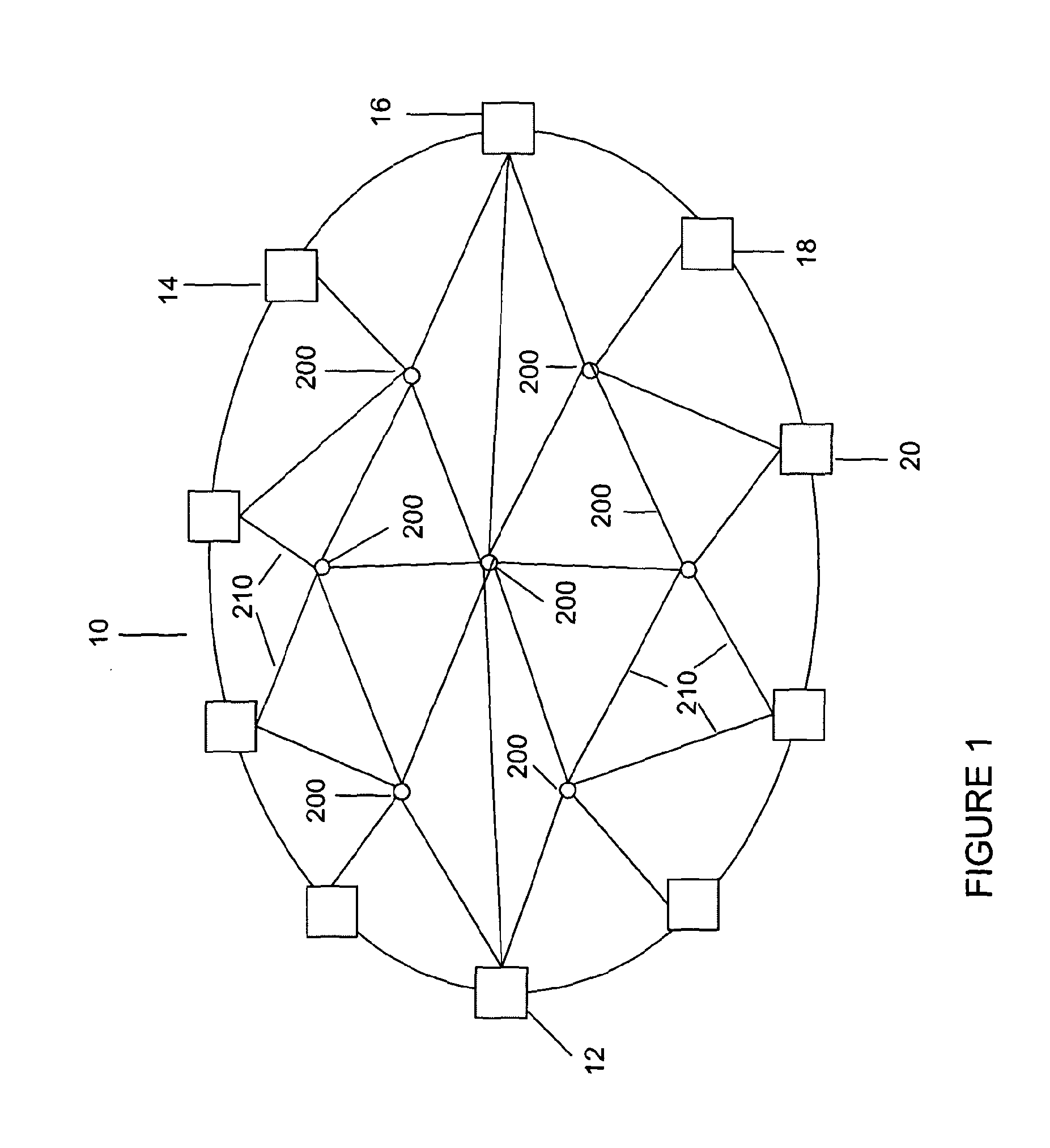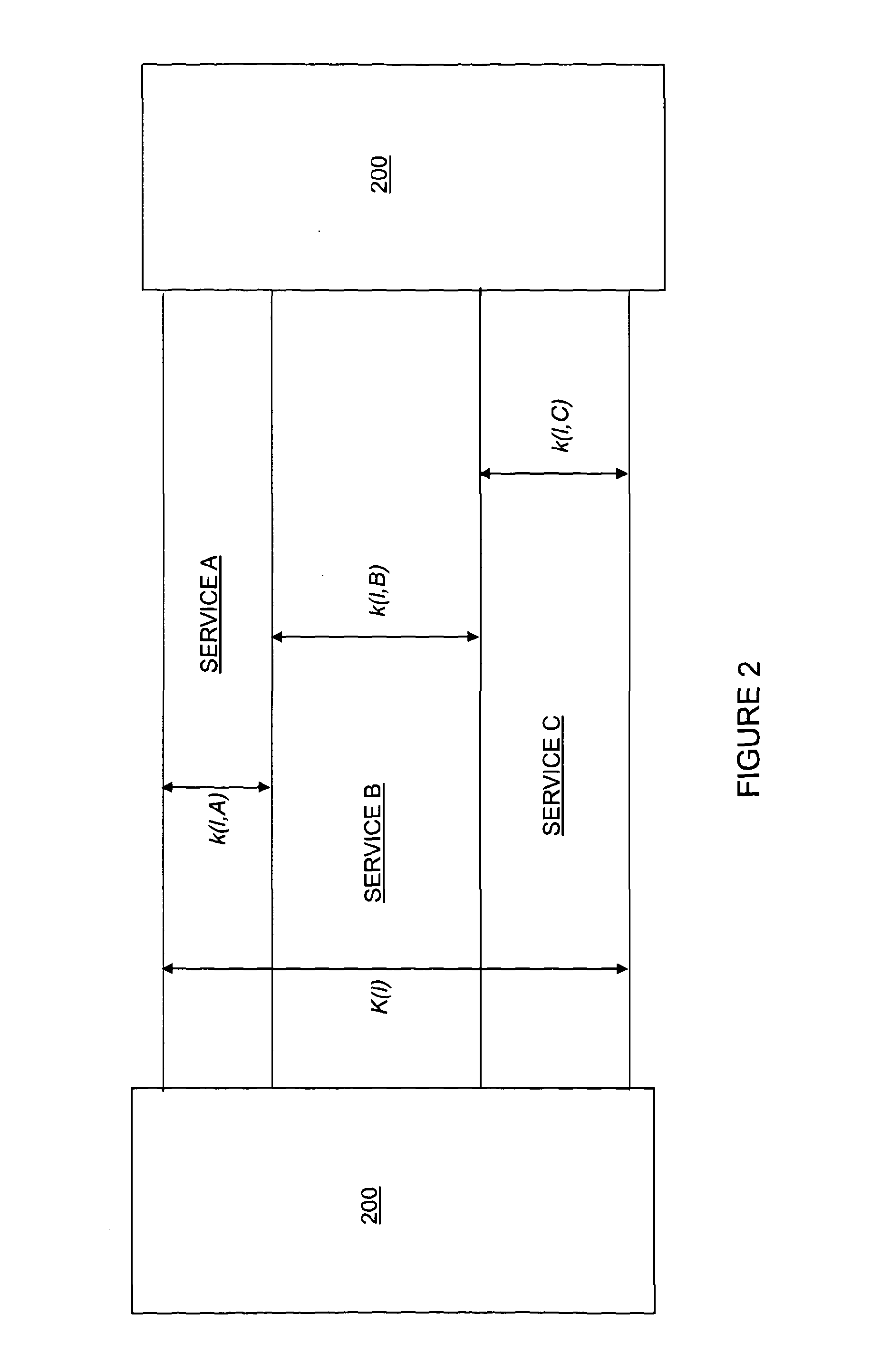Capacity adaptation between services or classes in a packet network
a packet network and capacity adaptation technology, applied in data switching networks, frequency-division multiplexes, instruments, etc., can solve the problems of increasing costs as the available capacity reduces, and achieve the effect of preventing large oscillations in capacity allocation and promoting stable operation
- Summary
- Abstract
- Description
- Claims
- Application Information
AI Technical Summary
Benefits of technology
Problems solved by technology
Method used
Image
Examples
Embodiment Construction
[0058]A brief overview of embodiments of the invention will be described next, followed by detailed descriptions of embodiments.
[0059]Embodiments of the present invention are directed at allocating network capacity between multiple services, or service or traffic classes, using congestion-influenced “shadow price indications” for the services or classes. In this respect, in previous work congestion prices were interpreted as the cost of using an additional unit of already-allocated capacity. However, in embodiments of the present invention, instead of interpreting congestion prices in this way, and using them as explained earlier, we use a “shadow price indication”, using this to represent the value that could be obtained if an extra unit of capacity were allocated to the service or class to which it relates. By using the alternative interpretation and understanding of what is represented by a congestion price, then using such “shadow price indications” instead of just using the con...
PUM
 Login to View More
Login to View More Abstract
Description
Claims
Application Information
 Login to View More
Login to View More - R&D
- Intellectual Property
- Life Sciences
- Materials
- Tech Scout
- Unparalleled Data Quality
- Higher Quality Content
- 60% Fewer Hallucinations
Browse by: Latest US Patents, China's latest patents, Technical Efficacy Thesaurus, Application Domain, Technology Topic, Popular Technical Reports.
© 2025 PatSnap. All rights reserved.Legal|Privacy policy|Modern Slavery Act Transparency Statement|Sitemap|About US| Contact US: help@patsnap.com



